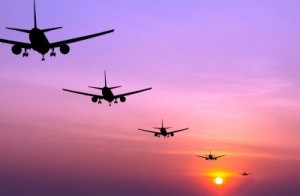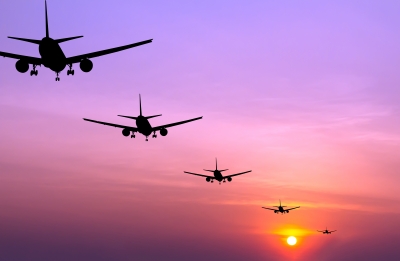 The Philippines has finally caught up with its neighbors in the Association of Southeast Asian Nations (ASEAN) and ratified the two remaining protocols out of the six that together comprise a regional pact liberalizing air transportation in the ASEAN economic community.
The Philippines has finally caught up with its neighbors in the Association of Southeast Asian Nations (ASEAN) and ratified the two remaining protocols out of the six that together comprise a regional pact liberalizing air transportation in the ASEAN economic community.
On February 3, President Benigno Aquino III signed Protocol 5 and Protocol 6 of the ASEAN Multilateral Agreement in Air Services (MAAS), the Department of Transportation and Communications (DOTC) said in a statement.
Under the two protocols, Philippine air carriers can now fly unlimited frequencies to and beyond the capital cities of ASEAN member states. Protocol 5 provides contracting states’ designated carriers with unlimited third and fourth freedom opportunities between their own capital city and all the other ASEAN capital cities while Protocol 6 provides unlimited fifth freedom traffic rights between ASEAN capital cities.
According to the ASEAN Integration Report 2015 (AIR 2015) released in November 2015, Protocols 5 and 6 have much greater economic significance than the first four protocols, since the two cover the 10 capital cities and are not limited by sub-regional proximity.
READ: NAIA congestion keeping PH from signing some ASEAN air transport liberalization pacts
Transport Secretary Joseph Emilio Abaya said this will “enhance regional trade and investment opportunities for Philippine businesses that are looking to expand their markets.” This will also “provide better access to Filipino individuals, such as professionals and students, who wish to explore job and educational opportunities in the ASEAN region.”
Moreover, the transport department expects the MAAS to benefit the country’s local tourism and service industries, “as the agreement allows foreign airlines to increase their flights to Manila and other cities as well. Just as it will encourage more visitors to come to the country, Filipinos will also enjoy a wider array of flight options and ticket prices to the rest of the ASEAN.”
The signing of the two protocols finally makes the country compliant with the MAAS. AIR 2015 earlier said the Philippines was the only country left in the ASEAN that had yet to ratify the two protocols, as all the other member states had already approved all protocols under MAAS as of October 2013.
The AIR 2015 report had said the Philippines “has kept its capital, Manila, restricted and has not ratified MAAS Protocols 5 and 6” because the “government justifies its decision based on the shortage of landing and takeoff slots and overall runway congestion at central Manila’s Ninoy Aquino International Airport (NAIA).”
It added that while the concern over congestion at NAIA was understandable, the attempt to link traffic rights and airport slots was “problematic” and “these are separate matters that should be kept distinct.”
The report pointed out that “the lack of airport slots should not prevent Member States from ratifying the ASEAN agreements to liberalize market access rights and to signal their support for the ASEAN’s market integration efforts.”
DOTC said it will continue to modernize the country’s airport infrastructure to meet the expected impact of greater tourist and economic air activities following ratification of the protocols.
It added that together with its attached agency, the Civil Aeronautics Board, they will be assisting Philippine carriers in securing additional flight schedules to ASEAN neighbors and targeting the launch of new flights within the next six months.
The MAAS is part of the ASEAN Roadmap for Integration of Air Transportation Services, which lays the foundation for the envisioned ASEAN Single Aviation Market. – Roumina Pablo
Image courtesy of satit_srihin at FreeDigitalPhotos.net





